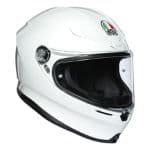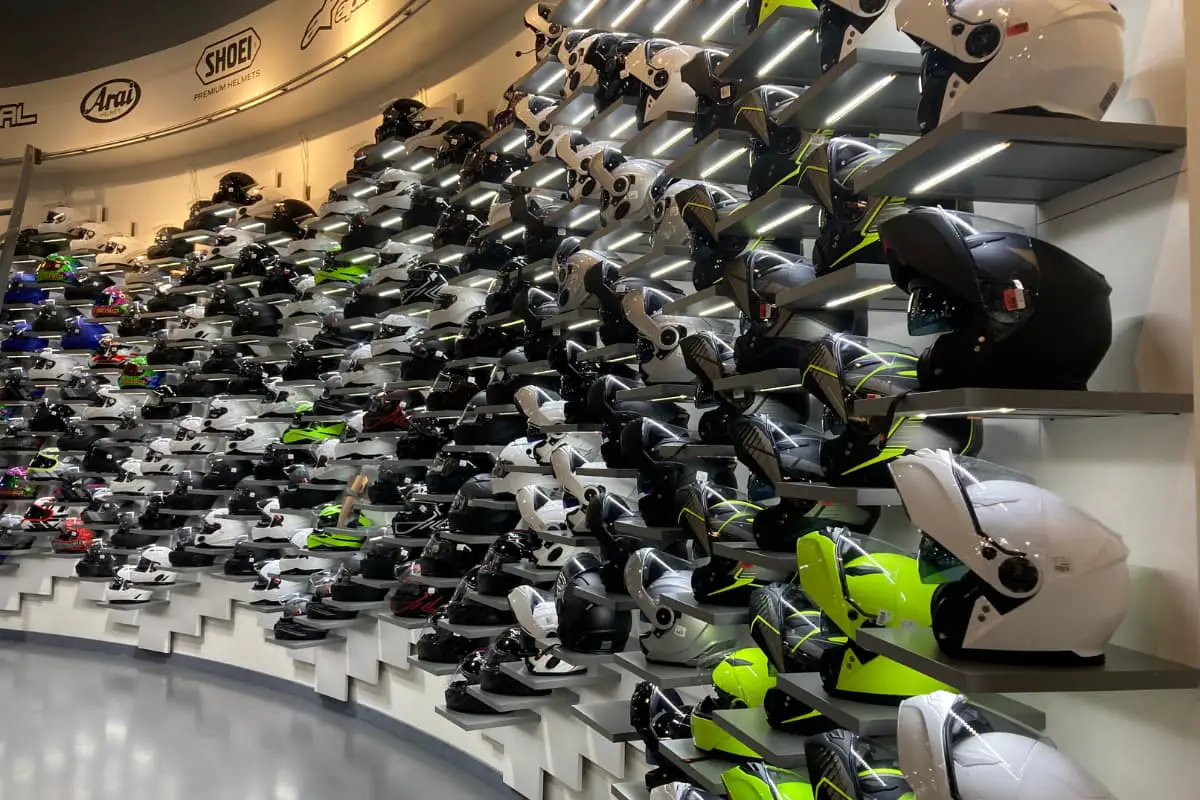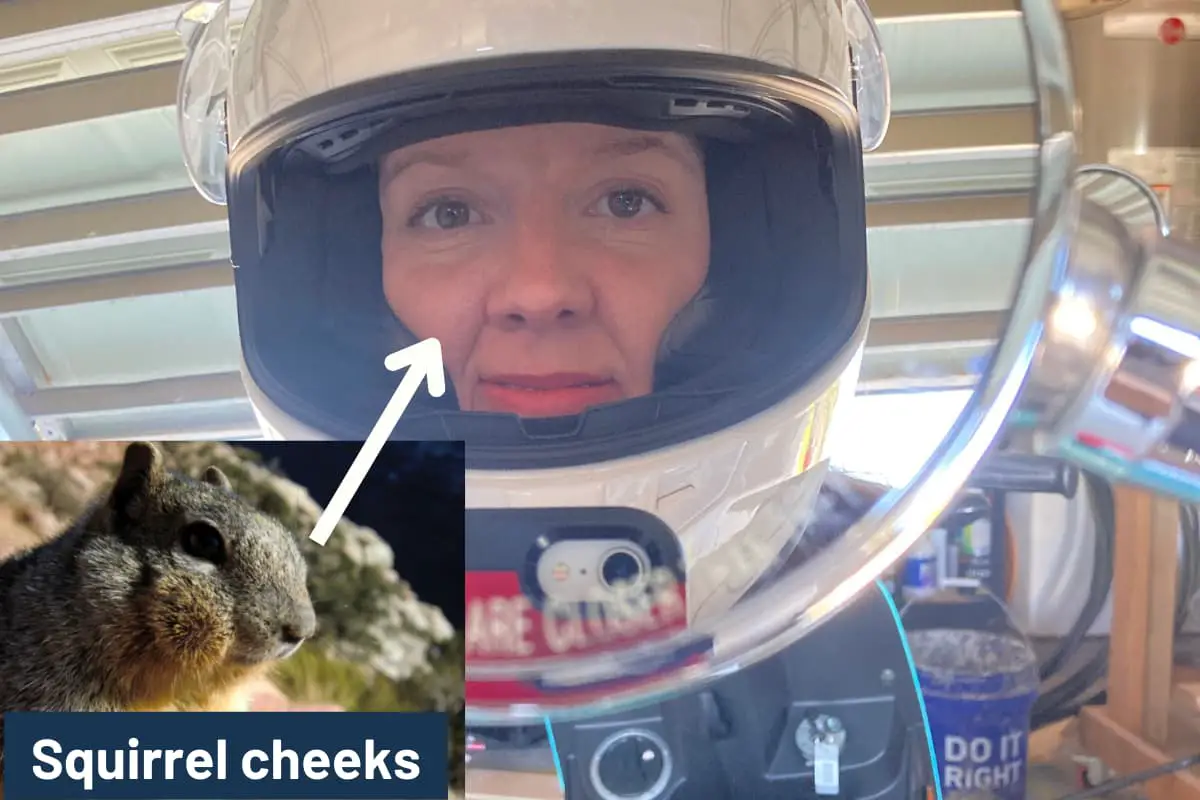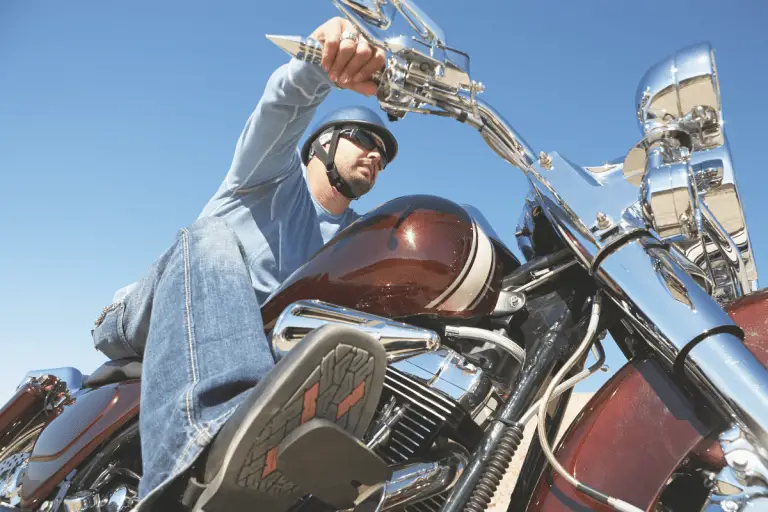There is no doubt that a motorcycle helmet is the single most effective piece of gear you can wear to protect yourself in the event of the worst case scenario – an accident. For this very reason, getting a motorcycle helmet should be the very first thing you do when you decide to ride.
Yes, you can choose a helmet based on color, how it looks overall, and your budget. But safety is #1, and a good fit is all part of the safety equation. Add in that you know that each brand sizing differs for even the jeans you wear, and getting a good fit for your helmet certainly comes into question.
Helmet sizes are not universal as there is some variation between manufacturers. The actual measurement and shape of your head is what you need to work with to make sure you get a well-fitting motorcycle helmet.
Let’s discuss how you can choose a helmet that fits you perfectly & what makes helmets different between brands.

Top Helmet Pick
Lightweight, breathable, & available in more than just black
Things To Consider When Getting the Perfect Motorcycle Helmet
As a motorcycle rider, there are several things to consider when you aim to get the right sized helmet that fits perfectly. Whether you live in a state that has a universal helmet law or not, here are some essential aspects that can guide you in a comfortable helmet that is the correct size to protect you best!

Shape
This was new to me when I started riding, but the shape of your head may not match the shape of the rider next to you! I get the whole size thing, but yes there are a few different shapes that helmets account for.
Even if the size is perfect, once the shape of the head is different from the shape of the helmet, then the helmet will not fit perfectly. Helmet manufacturers all design the helmets to fit a particular head shape so that the protective materials fit snugly all around your head. Part of the impact absorption your helmet depends on the material sitting snug against your head to minimize the movement within the helmet (& therefore adding extra impact potential).
The basic helmet shapes are the round oval, long oval and intermediate oval shapes. You can literally break out a tape measure designed to bend and flex (like the sewing kind) to help you determine your shape.
- Round Oval: This helmet shape is designed for riders whose front to back measurement is almost the same as the measurement from one ear to the other. Fairly equal length & width.
- Long Oval: This is the shape of helmets designed for people whose forehead to the back of the skull measurement is longer than the measurement from one ear to another. Longer than wide.
- Intermediate Oval: This is the shape between the long and the round, oval shape. It is designed for people whose front to back measurement is slightly longer than that of one ear to another. Longer than wide but not as dramatic.
After the suitable helmet shape is determined, you will be able to streamline our search to a specific shape. Now you can proceed to find the perfect size of motorcycle helmet.
Size
Measuring to know your helmet size is as simple as measuring hat size. To measure the size of your head, you will need a tailor’s measuring tape. The tape is used because of its flexibility, making it easy to wrap it around the head.
Wrap the tape around the head. The tape should be placed above the ears and about half to one inch above the eyebrows. Then compare this measurement with the size chart to determine which helmet size will be a perfect fit.
Below is a table showing an example of a size chart with hat sizing in case you have that number memorized.
| SIZE | HAT SIZE | CENTIMETER | INCHES |
| S | 55-56 | 21.5 -22 | 6.8-7 |
| M | 57-58 | 22.3-22.8 | 7.1-7.3 |
| L | 59-60 | 23-23.5 | 7.3-7.5 |
| XL | 61-62 | 23.7-24.3 | 7.7-8 |
Note that the size chart is not fixed but is unique to each manufacturer. It’s just a guide to help you narrow down!
Are Motorcycle Sizes Universal?
This is a question that many people ask, particularly people who are new to riding.
The sizes of a motorcycle helmet are not universal as they tend to vary from one manufacturer to another. This is why you must compare the size of your head to the six charts provided by the manufacturer of the brand of motorcycle helmet you want to get.
The measurement on the size chart varies slightly with brands. For example, a brand can have the same measurement for an L sized motorcycle helmet on their size chart. However, the size fitting may be slightly different due to the size of the helmet shell, the cheek pad and inner padding thickness.
This effect can be more pronounced if you are looking at full-face helmets or modular helmets as you have more coverage, but the right fit is still important regardless of the helmet style you prefer.
How To Know When The Helmet Is The Perfect Fit
When trying out a motorcycle helmet, one crucial thing to pay attention to is the pressure on the skull and your forehead. The helmet must not be extremely tight and must not be loose.
I highly recommend you hang out at a gear store for a bit once you’ve narrowed down your head shape & size. Try one on, and go check out other gear for ~15 minutes to assess how it feels.
Yes, it’s snug. No, they aren’t wonderfully comfortable. Yes, it will break in a bit, but you’ll need to embrace your squirrel cheeks when you ride. BUT there are some key fit issues to look out for.
After putting on a motorcycle helmet, if the pressure on your skull is high and there is a tight sensation on your forehead, the helmet is small for you. Red marks on your forehead after you take the helmet off is an indication the head shape doesn’t match yours (or it’s flat out the wrong size).
However, if the tightness is felt around the cheek, i.e. if the cheek pads apply a lot of pressure on your cheek, the helmet may be considered too small or tight as the cheek pads.

It’s a careful balance as there is a level of ‘breaking in’ that happens over time to some degree.
On the other hand, to know if the size of the helmet is too big, all you need to do is shake your head after putting the helmet on. If there is space to wiggle your head in the helmet, this helmet is not your size. You need to feel a bit snug. Uncomfortably snug is my description as a newbie.
The exception to this rule is riders whose head shape is long oval. There may be spaces at the sides of the helmet, even if the helmet is the perfect fit, but I highly recommend working with someone at a gear store to minimize how much space you have in your helmet. Space is risk!
Wrap it up
A well-fitted motorcycle helmet plays a part in ensuring that you have a safe and comfortable ride on your scooter (or motorcycle).
Read here for a more in-depth guide on choosing the best motorcycle helmet (like the style & safety standards).
If budget is a big concern, read here for more on what you can expect to spend based on the type of helmet you want.
Do you even need a helmet for a scooter? Read about whether you even NEED a helmet for a scooter here.
The wrong helmet size can cause pain if it is too small, and this can cause little distractions that can lead to an accident during a ride. If it is too small, it may not offer maximum protection in case of an accident. Take your time. Find the right fit.
Manufacturers produce different sizes of the motorcycle helmet to satisfy the large market size, so you need to carefully and patiently choose your new helmet to be safe & comfy!





